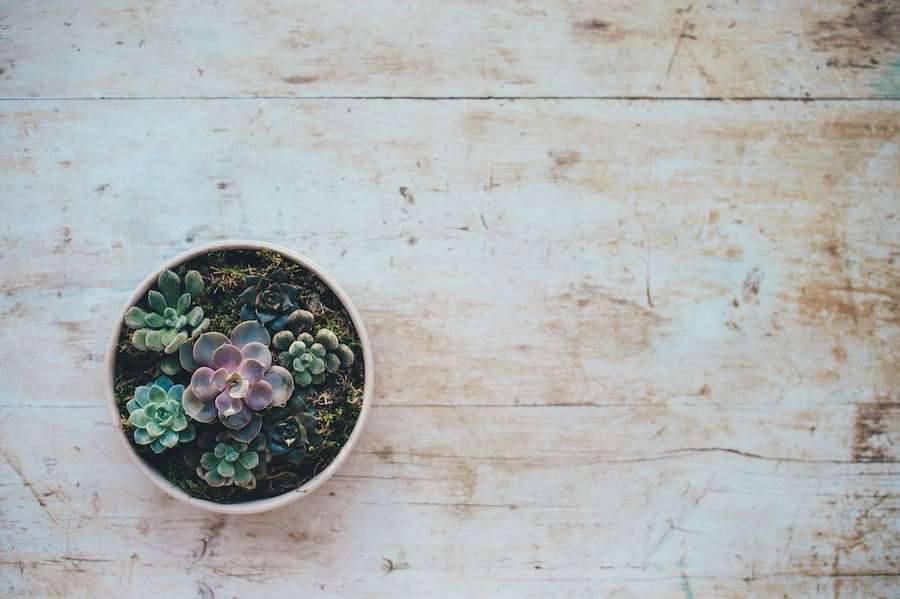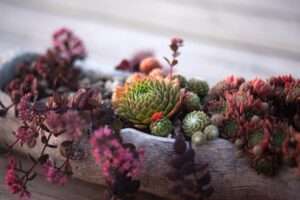Succulents have gained immense popularity in recent years due to their unique and beautiful appearance. These plants are known for their ability to store water in their leaves, stems, and roots, making them highly adaptable to arid conditions. While succulents are generally low-maintenance plants, they still require proper care to thrive. One crucial aspect of succulent care is fertilizing. Fertilizing succulents provides them with the necessary nutrients they need to grow and stay healthy. In this article, we will explore the importance of fertilizing succulents, the specific nutrient requirements of these plants, how to choose the right fertilizer, how often to fertilize, and common mistakes to avoid.
The importance of fertilizing succulents
Fertilizing is essential for the growth and health of succulents. While these plants are known for their ability to survive in harsh conditions, they still require nutrients to thrive. Fertilizers provide essential elements that may be lacking in the soil, ensuring that succulents have access to all the necessary nutrients for optimal growth. Without proper fertilization, succulents may become weak, stunted, or even die.
Fertilizing also helps succulents produce vibrant and colorful blooms. Many succulent enthusiasts grow these plants for their stunning flowers, and proper fertilization plays a crucial role in achieving this goal. Fertilizers provide the necessary nutrients for flower production and can enhance the overall aesthetic appeal of your succulent collection.
Understanding the nutrient requirements of succulents
To effectively fertilize succulents, it is important to understand their specific nutrient requirements. While different species of succulents may have slightly different needs, there are some common nutrients that all succulents require.
Nitrogen (N) is an essential nutrient for succulent growth as it promotes leaf and stem development. Phosphorus (P) is necessary for root development and overall plant health. Potassium (K) helps with water regulation and disease resistance. These three nutrients are often referred to as macronutrients and are required in larger quantities.
In addition to macronutrients, succulents also require micronutrients, albeit in smaller amounts. These include elements such as iron (Fe), manganese (Mn), zinc (Zn), copper (Cu), and boron (B). These micronutrients are essential for various physiological processes within the plant, including enzyme activation and chlorophyll production.
Choosing the right type of fertilizer for succulents
When it comes to choosing the right fertilizer for succulents, there are several options available. The two main types of fertilizers are organic and synthetic.
Organic fertilizers are derived from natural sources such as compost, manure, or bone meal. They release nutrients slowly over time, providing a steady supply of nourishment to the plants. Organic fertilizers also improve soil structure and promote beneficial microbial activity. However, they may take longer to show results compared to synthetic fertilizers.
Synthetic fertilizers, on the other hand, are manufactured using chemical compounds. They provide a quick release of nutrients and are readily available to the plants. Synthetic fertilizers can be tailored to meet specific nutrient requirements and are often more concentrated than organic fertilizers. However, they can also be more prone to leaching and can harm beneficial soil organisms if used excessively.
When choosing a fertilizer for your succulents, it is important to consider their specific needs. Look for a balanced fertilizer with an NPK ratio that suits your plants’ requirements. A ratio of 10-10-10 or 14-14-14 is generally suitable for most succulents. Additionally, opt for a slow-release fertilizer if you prefer a hands-off approach or choose a liquid fertilizer if you want more control over the nutrient application.
How often should you fertilize succulents?
The frequency of fertilization for succulents depends on several factors, including the type of fertilizer used, the growth stage of the plants, and the environmental conditions. In general, it is recommended to fertilize succulents during their active growing season, which is typically in spring and summer.
For slow-release fertilizers, a single application at the beginning of the growing season may be sufficient. These fertilizers release nutrients gradually over time, providing a steady supply to the plants. However, if you notice signs of nutrient deficiency or slow growth, you can apply a second round of fertilizer halfway through the growing season.
Liquid fertilizers, on the other hand, require more frequent applications. It is best to dilute the fertilizer according to the manufacturer’s instructions and apply it every two to four weeks during the active growing season. Be cautious not to over-fertilize as this can lead to nutrient burn or other issues.
It is important to note that succulents do not require fertilization during their dormant period, which is typically in fall and winter. During this time, their growth slows down, and they require less nutrients. Over-fertilizing during dormancy can lead to salt buildup in the soil and cause harm to the plants.
Tips for fertilizing succulents in pots

When fertilizing succulents in pots, there are a few tips to keep in mind to ensure optimal nutrient uptake and prevent any potential issues.
Firstly, always water your succulents before applying fertilizer. This helps prevent fertilizer burn by diluting any excess salts in the soil. Watering also ensures that the roots are adequately hydrated and ready to absorb nutrients.
Secondly, use a well-draining potting mix specifically formulated for succulents. This allows excess water to drain away quickly and prevents waterlogged conditions that can lead to root rot. A well-draining mix also helps prevent nutrient buildup in the soil, which can be harmful to succulents.
Thirdly, apply the fertilizer evenly across the soil surface, avoiding direct contact with the leaves or stems of the plants. Succulents are sensitive to fertilizer burn, and direct contact can cause damage. Gently work the fertilizer into the top layer of soil using a small hand tool or your fingers.
Lastly, always follow the recommended dosage instructions provided by the fertilizer manufacturer. Over-fertilizing can lead to nutrient burn or other issues, while under-fertilizing may result in nutrient deficiencies. It is better to err on the side of caution and apply less fertilizer than to risk harming your succulents.
Fertilizing succulents in the ground: what you need to know
Fertilizing succulents planted in the ground follows similar principles as fertilizing potted succulents. However, there are a few additional considerations to keep in mind.
Firstly, it is important to know the nutrient composition of your soil before applying fertilizer. Conduct a soil test to determine any deficiencies or excesses in nutrients. This will help you choose a fertilizer that addresses your specific soil needs and prevents over-fertilization.
Secondly, when applying fertilizer to succulents in the ground, it is best to spread it evenly across the soil surface within the plant’s root zone. Avoid applying fertilizer directly onto the leaves or stems of the plants as this can cause damage.
Thirdly, consider using organic amendments such as compost or well-rotted manure when fertilizing succulents in the ground. These amendments not only provide nutrients but also improve soil structure and promote beneficial microbial activity.
Lastly, water your succulents thoroughly after applying fertilizer to ensure proper nutrient uptake and prevent any potential salt buildup in the soil. Watering also helps distribute the nutrients evenly throughout the root zone.
Signs of over-fertilizing succulents
Over-fertilizing succulents can have detrimental effects on their health and growth. It is important to be able to recognize the signs of over-fertilization to take corrective measures promptly.
One common sign of over-fertilization is leaf burn or discoloration. The tips or edges of the leaves may turn brown or black, and the affected areas may become crispy or dry. This is often caused by an excess of salts in the soil, which can occur when too much fertilizer is applied or when the plants are not adequately watered.
Another sign of over-fertilization is stunted growth or a lack of new growth. While it may seem counterintuitive, excessive nutrients can actually hinder plant growth by disrupting the balance of other essential elements. If your succulents are not showing signs of new growth despite proper care, it may be a result of over-fertilization.
Additionally, over-fertilization can lead to nutrient imbalances in the soil. This can manifest as yellowing leaves, distorted growth, or other abnormal symptoms. If you notice any unusual changes in your succulents’ appearance, it is worth considering whether over-fertilization may be the cause.
Organic vs. synthetic fertilizers for succulents
When it comes to choosing between organic and synthetic fertilizers for succulents, there are pros and cons to consider for each option.
Organic fertilizers are derived from natural sources and provide a slow release of nutrients over time. They improve soil structure and promote beneficial microbial activity, which can enhance overall plant health. Organic fertilizers are also generally safer for the environment and do not contribute to chemical runoff or pollution. However, they may take longer to show results compared to synthetic fertilizers and may require more frequent applications.
Synthetic fertilizers, on the other hand, provide a quick release of nutrients and are readily available to the plants. They can be tailored to meet specific nutrient requirements and are often more concentrated than organic fertilizers. Synthetic fertilizers also tend to be more affordable and require less frequent applications. However, they can be more prone to leaching and can harm beneficial soil organisms if used excessively.
Ultimately, the choice between organic and synthetic fertilizers depends on personal preference and specific needs. Some gardeners prefer the slow-release and soil-improving properties of organic fertilizers, while others prefer the convenience and quick results of synthetic fertilizers. It is important to consider the specific requirements of your succulents and choose a fertilizer that meets those needs.
Common mistakes to avoid when fertilizing succulents
When it comes to fertilizing succulents, there are some common mistakes that people make. By avoiding these mistakes, you can ensure the health and vitality of your succulent collection.
One common mistake is over-fertilizing. It can be tempting to provide your succulents with extra nutrients in the hopes of promoting faster growth or more vibrant blooms. However, over-fertilizing can lead to nutrient burn, stunted growth, or other issues. Always follow the recommended dosage instructions provided by the fertilizer manufacturer and avoid excessive applications.
Another mistake is using the wrong type of fertilizer or using a fertilizer with an imbalanced nutrient ratio. Succulents have specific nutrient requirements, and using a fertilizer that does not meet those needs can lead to nutrient deficiencies or imbalances. Choose a balanced fertilizer with an appropriate NPK ratio for your succulents’ specific requirements.
Additionally, it is important to avoid applying fertilizer to dry soil or when the plants are stressed. Succulents should be adequately hydrated before applying fertilizer to prevent salt buildup or other issues. Water your succulents thoroughly before fertilizing, especially if you are using a dry or granular fertilizer.
Troubleshooting nutrient deficiencies in succulents
Despite your best efforts, nutrient deficiencies can still occur in succulents. It is important to be able to identify and address these deficiencies promptly to prevent further damage to the plants.
One common nutrient deficiency in succulents is nitrogen deficiency. This can manifest as pale or yellowing leaves, stunted growth, or overall weak plants. To address nitrogen deficiency, apply a balanced fertilizer with a higher nitrogen content or use an organic amendment such as compost or well-rotted manure.
Another common deficiency is iron deficiency, which can cause yellowing leaves with green veins. To address iron deficiency, you can apply a chelated iron fertilizer or use an iron-rich organic amendment such as seaweed extract.
Other nutrient deficiencies, such as phosphorus, potassium, or micronutrient deficiencies, may present with various symptoms depending on the specific nutrient lacking. Conduct a soil test to determine any deficiencies and choose a fertilizer or amendment that addresses those specific needs.
Fertilizing succulents is an important aspect of their care and can greatly contribute to their growth and overall health. By understanding the specific nutrient requirements of succulents and choosing the right type of fertilizer, you can ensure that your plants receive the necessary nutrients for optimal growth. Remember to fertilize in moderation, avoiding over-fertilization, and be mindful of the signs of nutrient deficiencies or imbalances. With proper fertilization, your succulent collection will thrive and bring you joy for years to come.
If you’re interested in learning more about fertilizing succulents, you might also enjoy reading this article on exploring the relationship between succulents and soil pH. Understanding the acidity of the soil can greatly impact the health and growth of your succulents. Check out the article here to discover how to create the optimal environment for your succulent garden.
FAQs
What is fertilizing succulents?
Fertilizing succulents is the process of providing essential nutrients to the plants to promote healthy growth and development.
Why is fertilizing succulents important?
Fertilizing succulents is important because these plants require specific nutrients to thrive. Without proper fertilization, succulents may become weak, stunted, or even die.
What type of fertilizer is best for succulents?
The best type of fertilizer for succulents is a balanced, water-soluble fertilizer with a low nitrogen content. A fertilizer with a ratio of 2-7-7 or 3-6-6 is ideal for succulents.
How often should I fertilize my succulents?
Succulents should be fertilized once a month during the growing season, which is typically from spring to fall. During the winter months, succulents do not require fertilization.
Can I use organic fertilizer for my succulents?
Yes, organic fertilizers such as compost, worm castings, and fish emulsion can be used for succulents. However, it is important to dilute the fertilizer and use it sparingly to avoid over-fertilization.
What are the signs of over-fertilization in succulents?
Signs of over-fertilization in succulents include yellowing or browning of leaves, stunted growth, and root damage. It is important to follow the recommended fertilization guidelines to avoid over-fertilization.
Can I fertilize my succulents during the dormant period?
No, succulents do not require fertilization during their dormant period, which is typically during the winter months. Fertilizing during this time can cause damage to the plant.

















Add Comment